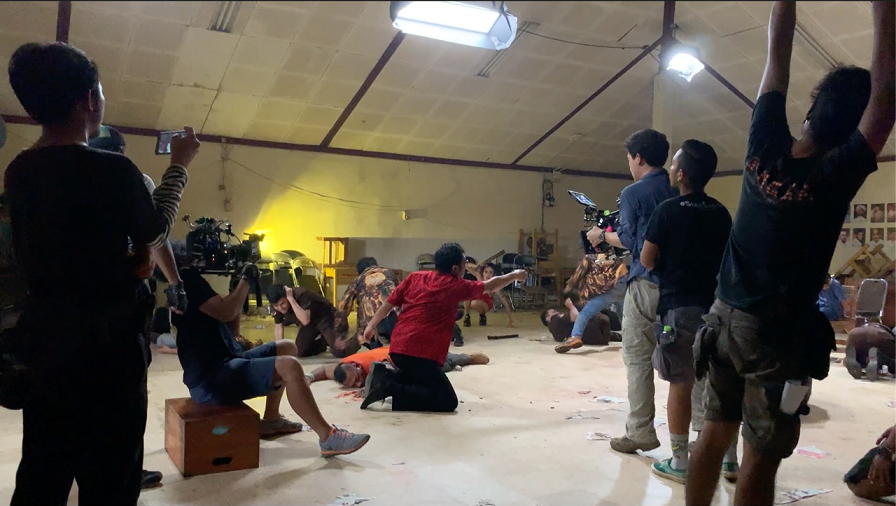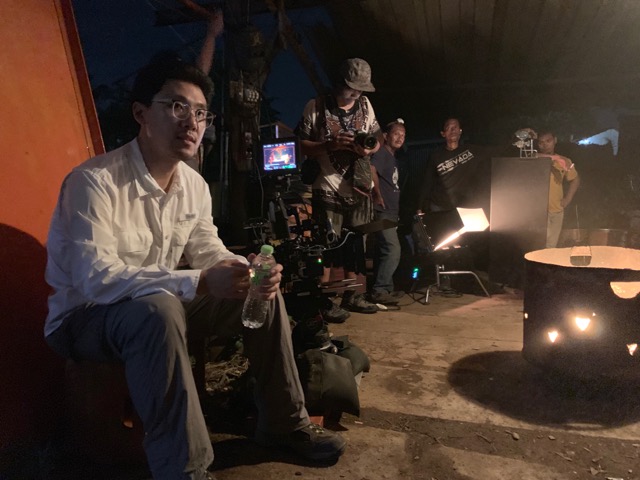
Randolph Zaini and Xing-Mai Deng (writer/director and cinematographer, respectively) have done something exceptional with the film Preman; they’ve reimagined an action film sub-genre and placed the audience directly within the action. You can witness this remarkable film and their work via Netflix, Apple iTunes, and Amazon. Preman is a gangster crime film which makes use of Indonesia’s incredible stunt choreographer Jonathan Ozoh (of the Michael Mann directed Blackhat) to manifest thrilling and frightening moments of action. This film’s eight nominations from the Indonesian Film Festival (Best Picture, Best Director, Best Actor, 2 Best Supporting Actors, and wins for Best Visual Effects, Best Makeup, and Hairstyling) and status as an official selection at numerous prestigious film festivals (Shanghai International Film Festival, Seattle International Film Festival, and others) are owed to much more than fantastic stunt work, it’s equally due to a specific design by the film’s director and DP that makes the audience feel as if they’re walking and fighting amongst the characters. Cinematographer Xing-Mai credits inspiration and research for enabling this unique filmmaking style which wowed audiences across the globe.

Preman is full of action but void of heroes. “Preman” is the Indonesian term for gangster and nearly all the main characters of this film fall under this label. As real estate developers build high rise apartments, the Preman members bully local residents out of their home in part of a cost-effective strategy. Sandi is a father and member of the Preman whose son witnesses the murder a gang elder by a crime boss and are thus considered a liability. Running for his life with his twelve-year-old son Panda, they lose much more than they expect in the process. What is gained in this pursuit is ample opportunity for combat and chase scenes, delivered in an intoxicating manner by extraordinary camera design and stunt choreography. DP Xing-Mai explains the approach that was taken stating, “We wanted the movements that are settled and stable for dialogue scenes, something refined and rehearsed. It should not be spontaneous – every camera movement is triggered by the plot or the character action. It’s important for the audience to feel the realism in each shot. For the action sequences, we wanted the camera to follow the action as if the audience is actually one of the characters involved in the fight, fighting with our protagonist.” Concerning his DP’s impact on the film, Randolph Zaini declares, “Sometimes when a director breaks down his/her vision with a head of department, it can be quite a daunting task. Much of what is communicated can get lost in interpretation; not with Mai. With his breadth of knowledge and inquisitive mindset, Mai never fails to get to the bottom of the director’s vision. He also proposes viable methods to not only achieve it, but also ways to elevate it.”

The camera truly serves as an experiential and emotional proxy for viewers of Preman. It’s stunning how Xing-Mai has pulled the audience inside the story with his camera positioning and lighting design for this film. In one scene between the crime boss and the real estate developer, his minimalist approach in lighting combines with the altering camera position to communicate the power dynamic between these two men, almost completely void of any dialogue. As the scene progresses, we feel the oppressive power of the developer over the murdering crime boss Guru. One of the highlights of the film is a spectacular “oner” or single-take scene during the pursuit of Panda and Sandi. The scene opens in a night club, neon disco lights shine different colors. The camera faces the stairs as a waitress holding a tray of drinks enters the frame. The camera follows her to the stage, then shifts slightly to a dancer who is talking to the waitress. A drunk police officer enters the frame but is pushed away by the dancers. The camera perspective follows the drunk police officer to the dance floor where all the police officers are drinking and partying in a foul atmosphere. The same waitress reenters the frame and we follow her to a private room. In the process, various inebriated people cross the frame; some fighting while others are making out in the background. Entering the room, we see the father-son duo sitting awkwardly on the couch while Komandan (the local police chief) sings Karaoke. We follow the tray of drinks to stay on the table and when Sandi picks up the drink, the camera follows the drink to give the son [Panda] a medium close-up for his reaction to this filthy underworld. It’s obvious that Xing-Mai and Zaini took painstaking time to design shots that would allow this type of embodying experience. The results are undeniable.
It’s notable that the Indonesian Film Festival is this country’s equivalent of the American Oscars; making the eight nominations/wins received by Preman a declaration of it as an overwhelming critical triumph. As modern day Hollywood begins to recognize the incredible impact of Asian filmmakers and Asian stories (Everything Everywhere All At Once, Parasite, Crazy Rich Asians) films like Preman prove to be part of this swelling tide which promises to invigorate the U.S. film industry.

Writer: Sharon Howe


Be the first to comment on "The Visceral Visuals of Preman with Cinematographer Xing-Mai Deng"